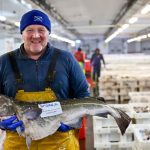According to the new plan the Steller sea lion is off the endangered species list while the restrictions will continue to prevent fishing nets from scooping up fish the sea lions eat near their rookeries and resting rocks. Due to restrictions the annual fishing seasons for pollock, cod and mackerel are broken up into pieces spread through the calendar to prevent concentrated catches.
Doug Mecum, acting Alaska chief for the National Marine Fisheries Service, told that the main aim of the new plan is to remove Steller sea lions from the endangered species list. The plan says that modest and steady population growth rates could be enough to delist the sea lion after 2030.
But commercial fishing groups, environmentalists and regulators have struggled over how to protect the animals and still conduct some of the nation’s largest commercial fisheries worth an estimated $1 billion annually. There are people who think that the new recovery plan is inadequate. Phil Kline, a Greenpeace activist and former commercial fisherman, said the Bering Sea industry needs to take fewer pollock and leave more for sea lions and other animals to eat.
Brendan Cummings, oceans programme director for the Center for Biological Diversity, informed that it is a status quo plan not a recovery plan. He added that the recovery plan is threat to Steller recovery.








